4S Conference Catalogue︎
Atlanta, as a rapidly developing southern city in the United States, has been going through serious transformation in order to enhance its city life. In September 2017, the City of Atlanta launched the North Avenue Smart Corridor as a part of its Smart City Project, whose goal is to improve roadway and public safety, mobility, and the environment through technology deployment and data analytics. The North Avenue has been equipped with numerous sensors wondering, observing and reporting the life in Atlanta streets. This project of mapping the North Avenue aims at providing a series of conceptual maps questioning the impact of smart corridor project on by looking at the public places through the eyes of smart sensors. It reconsiders the smart sensors as post-human flaneur strolling and recording the avenue.
In his article “Der Flaneur”, Walter Benjamin conceptualizes ‘flaneur’ in order to criticize the Modern city in the early nineteenth century. Flaneur is the Benjamin’s apparatus of literary, sociological and historical investigation of urban life. Benjamin borrows flaneur concept from famous French poet, Charles Baudelaire. Baudelaire’s flaneur lived in 19th century Paris during urban transformation of the city under the modernist vision of Baron Haussmann. Among all the aspects of Haussmann’s renovation of Paris, large boulevards were the most important aspect of the new urban life. Soon, Paris boulevards became a stage for Parisian bourgeois. The crowd in their high fashion outfits walked up and down on the boulevards not only to see and experience urban life but also to be seen and be experienced. Baudelaire, who witness the transformation of Paris, came up with the concept of ‘flaneur’, a casual wanderer, observer and reporter of street life in the modern city. For Baudelaire, modernity of a city is defined by the activities that flaneur reported.
For Benjamin, flaneur is no longer an outsider of modernity but a product of the modern life. He continues observing and reporting the environment that made him. Even though Benjamin’s flaneur is specific to Paris boulevards, the concept of flaneur has had a great influence on urban studies and has undergone several conceptual transformations to adapt itself into different geographies and developing technologies. In Atlanta, it would be an overstatement to talk about a flaneur, or an urban life. The city lacks of walkers, strollers, wanderers, and observers on its streets. However, as a part of the smart city project, the city has been equipped with numerous sensors wondering, observing and reporting the life in Atlanta streets. Benjamin’s human flaneur transforms into a post-human entity in Atlanta.
In his article, Benjamin introduces flaneur as an instrument of surveillance of urban life like an unwilling detective. He observes and record while leisurely strolling the street of Paris. Unlike a pedestrian flaneur, post-human flaneurs are stable, attached to the traffic lights and poles on the street of Atlanta. However, like a flaneur, they observe, record and report every square inch of the North Avenue. Moreover, similar to Benjamin’s male flaneur, they represent the patriarchal power over society. Like the invisible observer of a panopticon in a Foucauldian sense, they are the unequal gaze that watches public and the invisible forces that discipline the urban bodies. Furthermore, like a true flaneur, Atlanta’s post-human flaneurs imagine and plan for a future city, an ideal city created through calculation of every data. Benjamin’s critics of bourgeois flaneur as a contributor of the capitalist market is valid for the post-human flaneurs as well. They contribute to the capitalist markets through data currency. They generate data from any activity on the North Avenue that they record.
In the "North Avenue Smart Corridor” presentation, it is started that “Data, transformed into actionable information, will fundamentally transform how we run our city, serve our citizens, and support the business community.” The questions of how to transform data into actionable information, based on what values, and what types of action are waiting to be answered and debated. However, seeking answers for these questions goes beyond the scope of this project. Rather than offering answers, this project aims at asking questions and drawing attention to the asymmetrical relationship between people and post-human flaneurs. Unlike a Parisian flaneur strolling on a boulevard, post-human flaneurs are not there to be seen and experienced. They are incognito and hidden on the junctions of the north avenue. They do not share any information they collect with public. What do they see, hear and record? This projects maps the activities on the North Avenue through the eyes of post-human flaneurs in a speculative way and asks can we hide from the greedy eyes of post-human flaneurs?
Atlanta, as a rapidly developing southern city in the United States, has been going through serious transformation in order to enhance its city life. In September 2017, the City of Atlanta launched the North Avenue Smart Corridor as a part of its Smart City Project, whose goal is to improve roadway and public safety, mobility, and the environment through technology deployment and data analytics. The North Avenue has been equipped with numerous sensors wondering, observing and reporting the life in Atlanta streets. This project of mapping the North Avenue aims at providing a series of conceptual maps questioning the impact of smart corridor project on by looking at the public places through the eyes of smart sensors. It reconsiders the smart sensors as post-human flaneur strolling and recording the avenue.
In his article “Der Flaneur”, Walter Benjamin conceptualizes ‘flaneur’ in order to criticize the Modern city in the early nineteenth century. Flaneur is the Benjamin’s apparatus of literary, sociological and historical investigation of urban life. Benjamin borrows flaneur concept from famous French poet, Charles Baudelaire. Baudelaire’s flaneur lived in 19th century Paris during urban transformation of the city under the modernist vision of Baron Haussmann. Among all the aspects of Haussmann’s renovation of Paris, large boulevards were the most important aspect of the new urban life. Soon, Paris boulevards became a stage for Parisian bourgeois. The crowd in their high fashion outfits walked up and down on the boulevards not only to see and experience urban life but also to be seen and be experienced. Baudelaire, who witness the transformation of Paris, came up with the concept of ‘flaneur’, a casual wanderer, observer and reporter of street life in the modern city. For Baudelaire, modernity of a city is defined by the activities that flaneur reported.
For Benjamin, flaneur is no longer an outsider of modernity but a product of the modern life. He continues observing and reporting the environment that made him. Even though Benjamin’s flaneur is specific to Paris boulevards, the concept of flaneur has had a great influence on urban studies and has undergone several conceptual transformations to adapt itself into different geographies and developing technologies. In Atlanta, it would be an overstatement to talk about a flaneur, or an urban life. The city lacks of walkers, strollers, wanderers, and observers on its streets. However, as a part of the smart city project, the city has been equipped with numerous sensors wondering, observing and reporting the life in Atlanta streets. Benjamin’s human flaneur transforms into a post-human entity in Atlanta.
In his article, Benjamin introduces flaneur as an instrument of surveillance of urban life like an unwilling detective. He observes and record while leisurely strolling the street of Paris. Unlike a pedestrian flaneur, post-human flaneurs are stable, attached to the traffic lights and poles on the street of Atlanta. However, like a flaneur, they observe, record and report every square inch of the North Avenue. Moreover, similar to Benjamin’s male flaneur, they represent the patriarchal power over society. Like the invisible observer of a panopticon in a Foucauldian sense, they are the unequal gaze that watches public and the invisible forces that discipline the urban bodies. Furthermore, like a true flaneur, Atlanta’s post-human flaneurs imagine and plan for a future city, an ideal city created through calculation of every data. Benjamin’s critics of bourgeois flaneur as a contributor of the capitalist market is valid for the post-human flaneurs as well. They contribute to the capitalist markets through data currency. They generate data from any activity on the North Avenue that they record.
In the "North Avenue Smart Corridor” presentation, it is started that “Data, transformed into actionable information, will fundamentally transform how we run our city, serve our citizens, and support the business community.” The questions of how to transform data into actionable information, based on what values, and what types of action are waiting to be answered and debated. However, seeking answers for these questions goes beyond the scope of this project. Rather than offering answers, this project aims at asking questions and drawing attention to the asymmetrical relationship between people and post-human flaneurs. Unlike a Parisian flaneur strolling on a boulevard, post-human flaneurs are not there to be seen and experienced. They are incognito and hidden on the junctions of the north avenue. They do not share any information they collect with public. What do they see, hear and record? This projects maps the activities on the North Avenue through the eyes of post-human flaneurs in a speculative way and asks can we hide from the greedy eyes of post-human flaneurs?
 map.01 // vision cones
map.01 // vision cones map.02 // under surveillance
map.02 // under surveillance

map.03 // density of surveillance
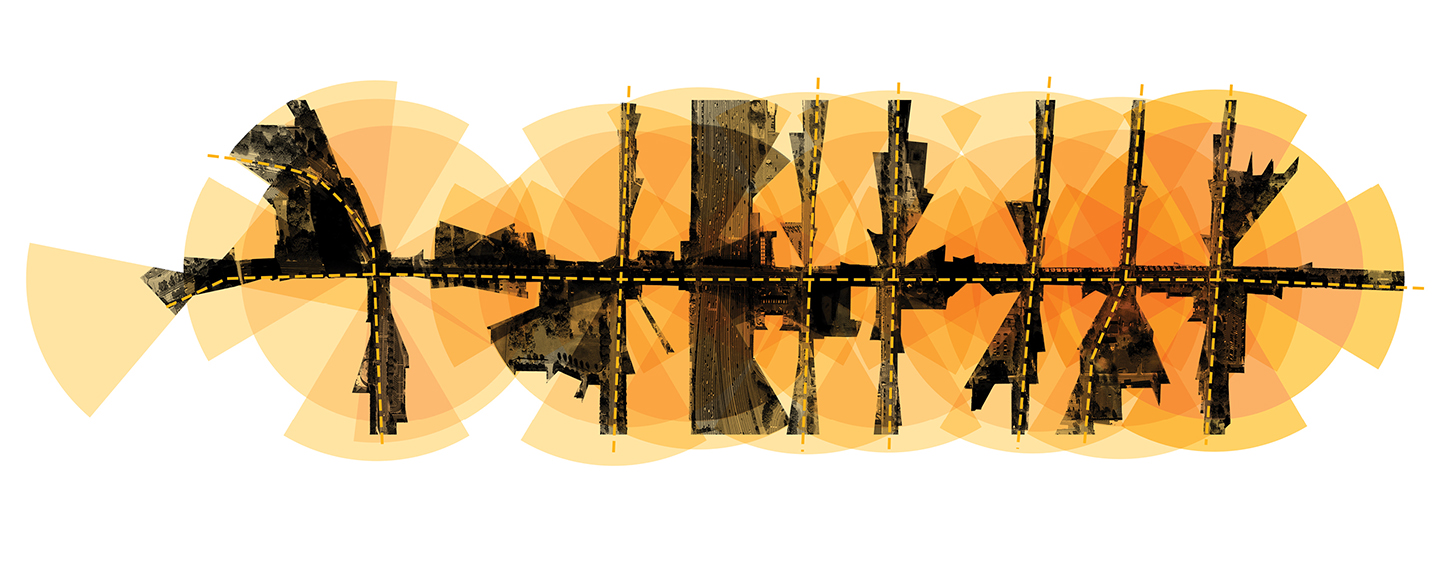
map.04 // invasion
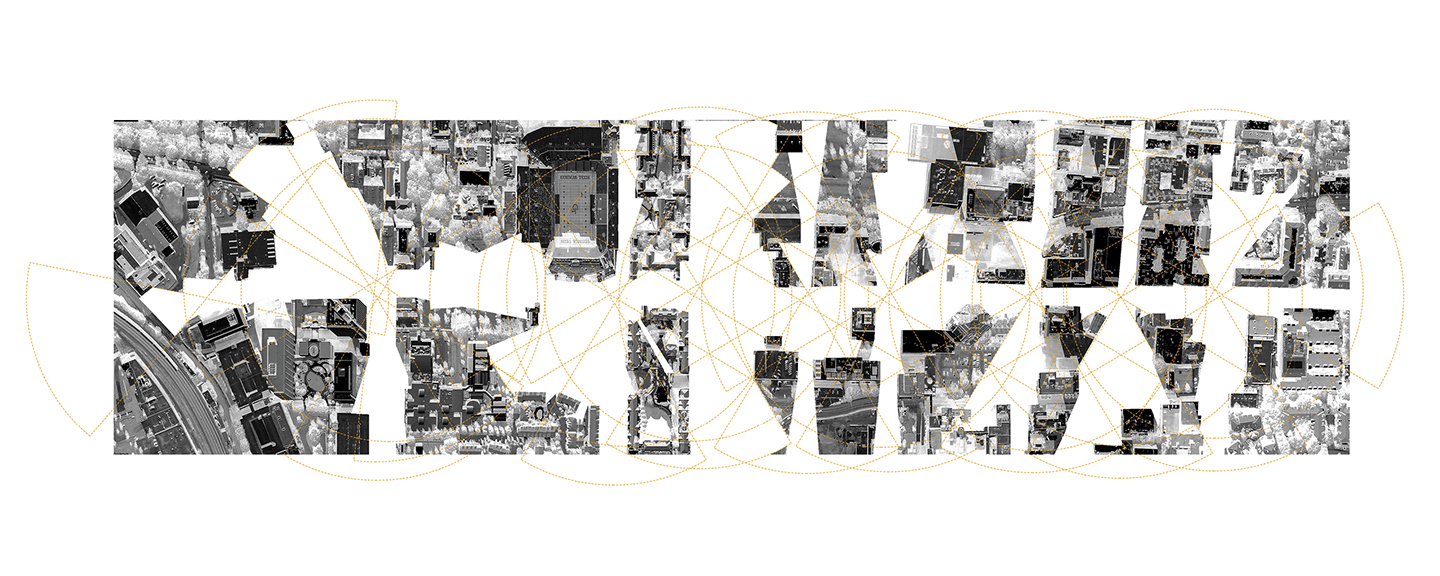 map.05 // invisable
map.05 // invisable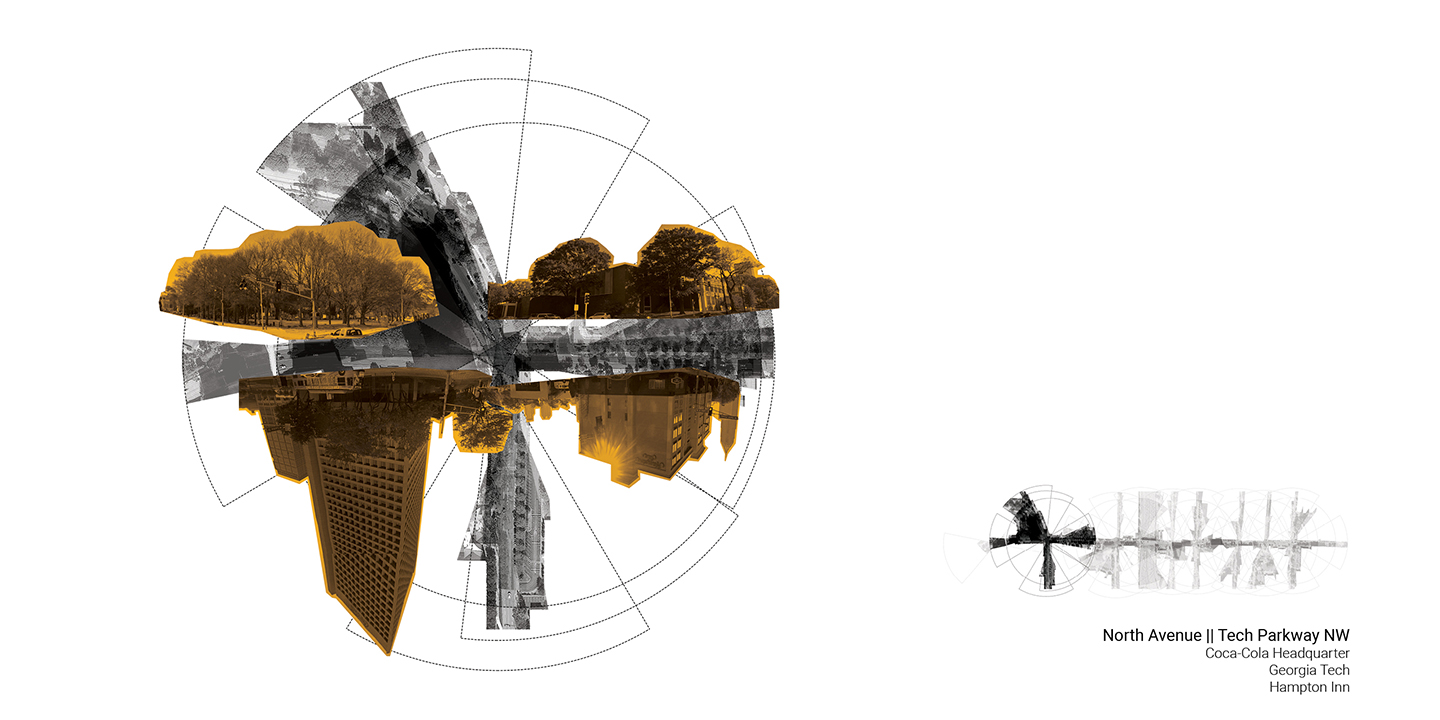 map.06 // junction
map.06 // junction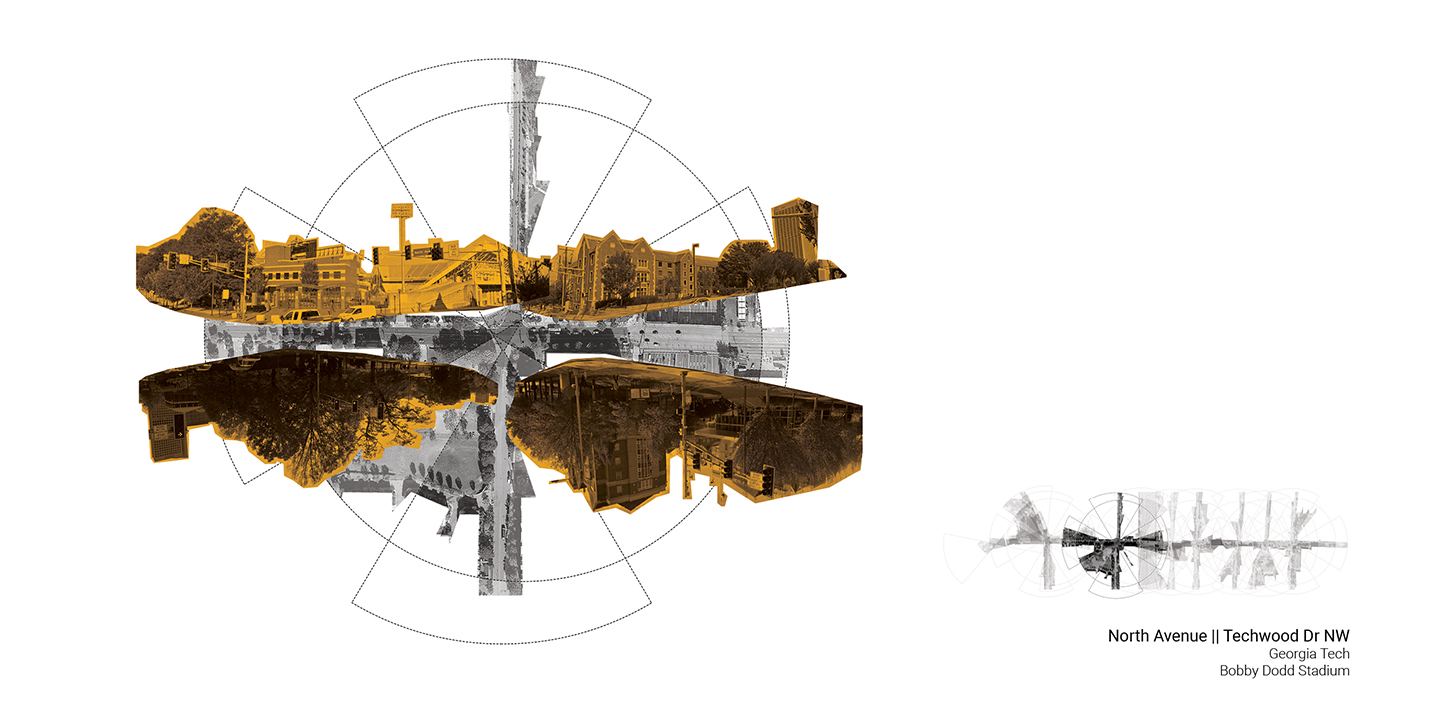
map.07 // junction
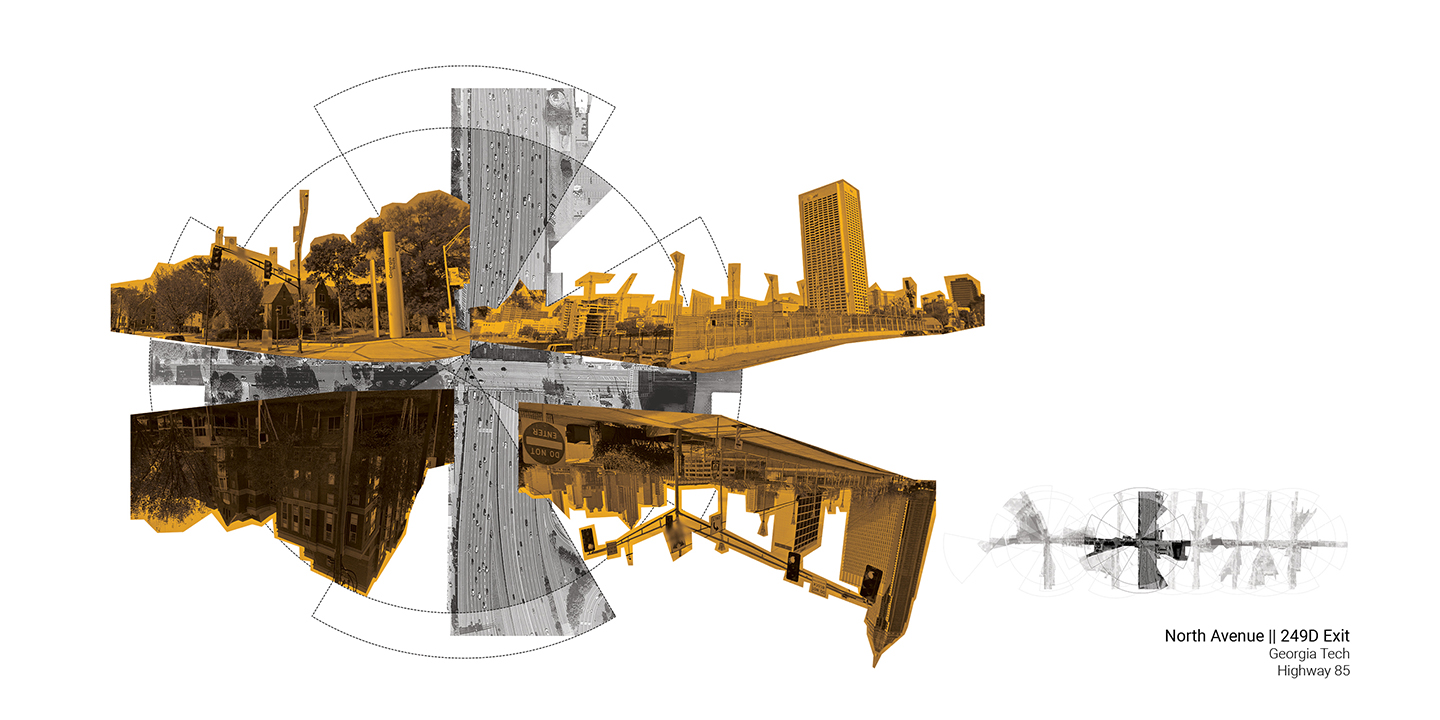
map.08 // junction
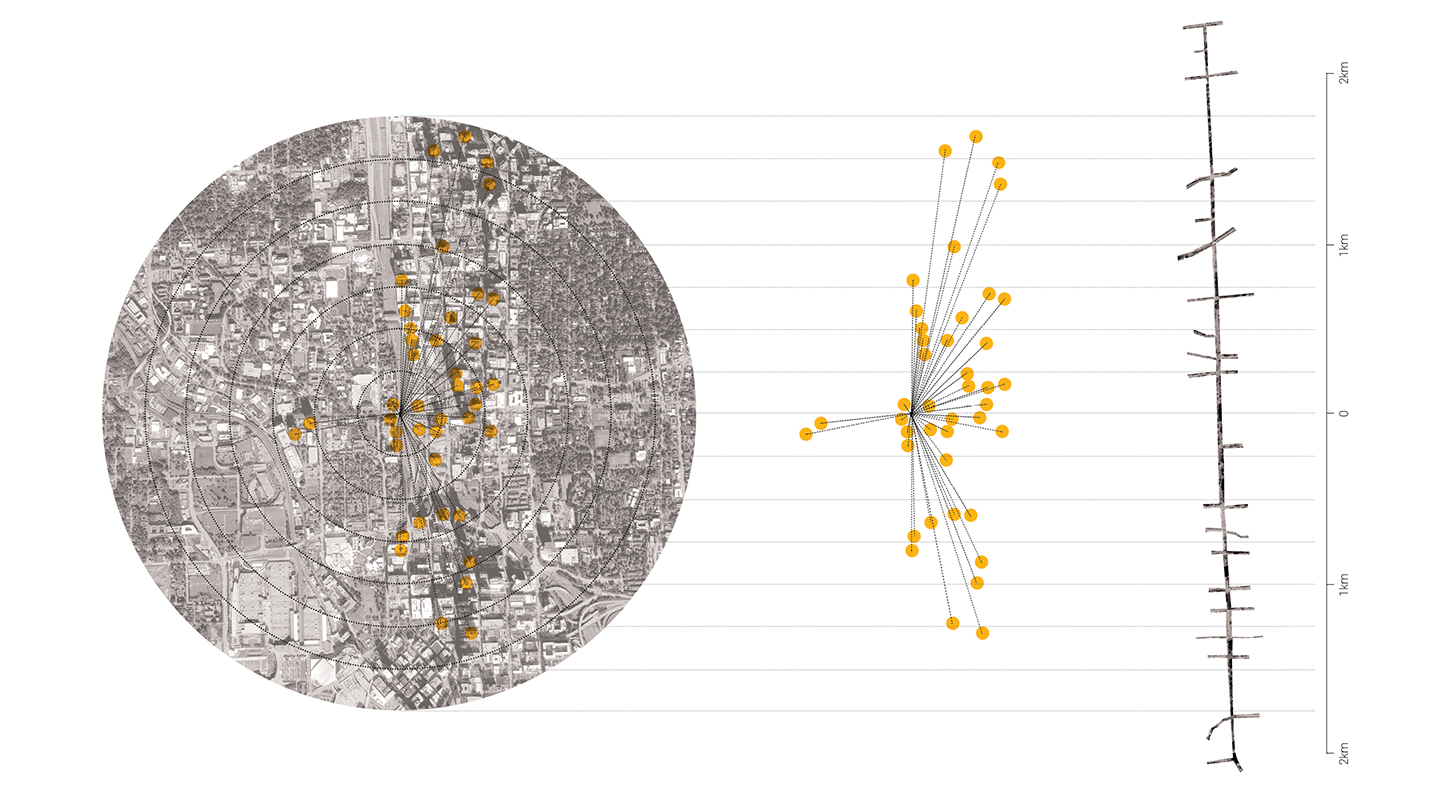 map.09 // beyond horizon
map.09 // beyond horizon